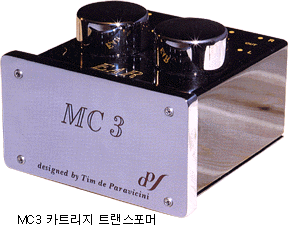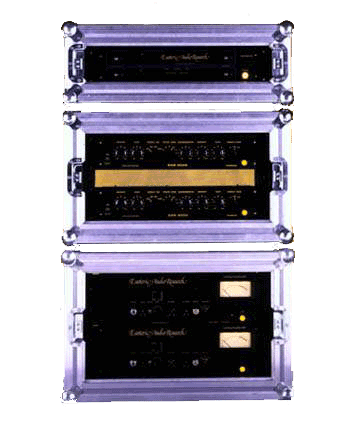Although aimed at the professional market, several Hi-Fi magazines picked up on the 509’ss,
and compared them to the then State of the Art domestic High End equipment. The fact
the 509 beat all of the competition at the time helps explain why the 509 is still in
production today. the 509 was designed by de Paravicini to have no sound; trying to
sum up the 509 is hard, it does not offer the warm ‘comfortable’ tonal quality which
so often mark most tube amplifiers out. They are remarkably clear, transparent, with
firm realistic bass, effortless top end, detailed and very alive.
In the twenty years since 1976, Tim has designed a mammoth catalogue of Hi-Fi and
Studio components, both for Esoteric Audio Research and for other domestic audio
companies. Currently the ‘E.A.R.@ professional product range includes a tube capacitor
microphone, built with a rectangular gold spluttered capsule. A design which easily
betters the classic European designs. Tube microphone preamplifiers, tube equalisers,
record cutting systems, analogue to digital converters (for CD mastering) plus custom
components and servicing for some of the Worlds most famous recording artists. His is
most famous in the studio industry for the stunning analogue tube master tape
recorders. These units have very special custom designed heads, and are capable of
digital levels of signal to noise ratio, with a bandwidth in excess of 8Hz to 80,000Hz!
Work for the recording industry has brought critical acclaim. On the ‘Waterlily’ label,
“A Meeting by the River” received a prestigious ‘Grammy’ award for its sound
quality. This was a mid/side technique recording using a pair of crossed microphones.
Waterlily’s microphones, preamplifiers, analogue master recorder and A/D converter
were all built and designed by Tim.
In 1985, de Paravicini introduced his new record cutting system. Now installed at ‘The
Exchange’ in the heart of London, (originally Island Records ‘Sound Clinic’ facility).
This is phase corrected, and uses in excess of 1,000 watts of tube audio power, based
on the classic EAR 509 circuit. The cutter head is again, a custom design, and is
capable of cutting deeper, wider grooves than any other system. The result is higher
dynamics, with a true signal to noise ratio in excess of 65 dB from records pressed off
a master cut on this system. It is truly as close to the original master tape as it is
physically possible to get.
Throughout the past twenty years, Tim has worked with many different manufacturers.
For London based Musical Fidelity, Tim designed the amazing A1, taking the concept of
a cut down ‘High End’ audiophile amplifier, the only compromise being the 10 watts
output, albeit pure class ‘A’. Other products designed for ‘M.F.’ include the
A470/370, P270, Digilog, CD-T, etc.
More recently in Europe, the ‘Tube Scene’ in domestic audio has really taken off. A
lot of European manufacturers have stolen both older European designs, and designs
from Japanese magazines and journals. Most of these amplifiers are very poor sounding,
and terribly unreliable. These manufacturers neither understand the designs or how to
build them. They use the reputation of tubes to sell their poor, none original product. De
Paravicini’s answer to these companies, was the award winning EAR 859 amplifier.
His all new Enhanced Triode Mode circuit bettering the performance of directly heated
triodes designs. It provided the public with a real design, from a professional maker.
The EAR 834P phono stage was also introduced, and similar to the ‘859 has proved
very popular, offering un-rivalled performance per dollar. The particular speciality being
the stunning Moving Coil stage transformers - transformer design being one of Tim de
Paravicini’s fortes - unlike most manufacturers, who just buy in ‘off-the-peg’
transformer designs or just specify the most basic requirement to an outside supplier.
All EAR amplifiers are truly original, including the custom transformer, metal work,
circuit printed cicuit board. All the work of Tim de Paravicini.
Tim de Paravicini works by a simple premises: If he designs it, it must be a better
design than anything else, or he will not manufacture it. His sole goal is taking audio
to the furthest possible point of development. Current research is taking him further
along this path than any single competitor.
 |


